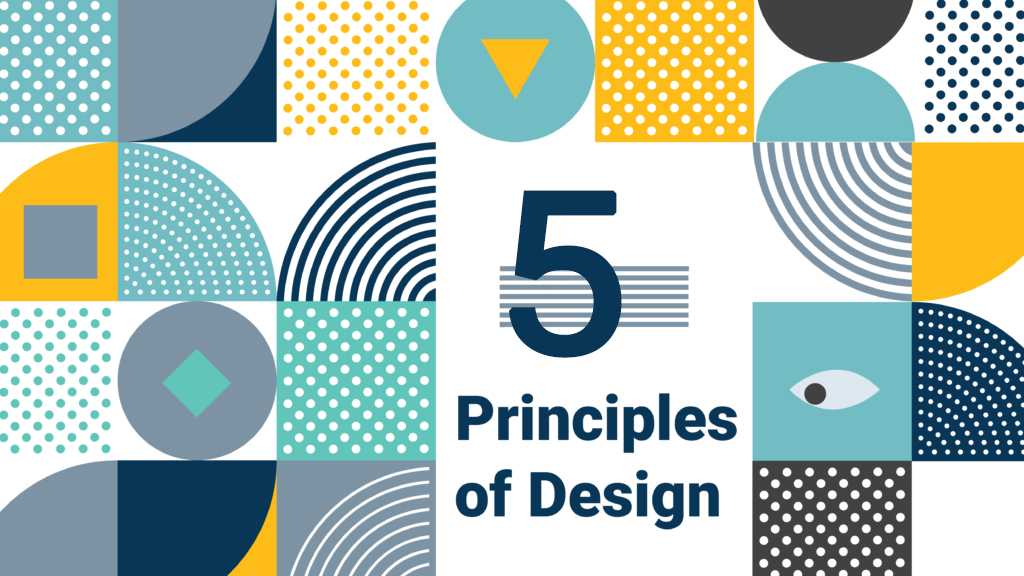Principle in this field refers to the ways elements may be manipulated to create a work of art.
The principles and elements of design both carry the same weight in executing an effective piece. If you disregard the principles, then you have a visual piece that lacks a story.
These principles are guidelines that are used to visually communicate the ideas represented by the elements.
PROXIMITY
Proximity refers to the way in which elements are grouped together so that the attention of the viewer or reader is redirected to the various parts of the visually designed message. It is the nearness of one element to another.
Proximity preserves unity and maintains the continuity of visual elements. It creates the relationship and connection among the elements on a page. Proximity provides a focal point, which is the center of interest or activity.
BALANCE
Balance is the distribution of the various visual weights of the objects used in the visual presentation, the proper combination and harmony of colors used, the tone and refinement of visual texture, and the appropriate use of space.
Balance provides stability and structure in a particular design. Balance in design is similar to the concept of balance in Physics.
ALIGNMENT
This particular principle refers to the order and organization between and among the elements. When elements are aligned, they create a visual connection with each other that communicates a story.
Alignment serves to put elements together in a visible and readable arrangement. Alignment is the sister or extension of proximity. It specifically refers to positioning items in such a way that they line up with each other…
REPETITION
Repetition may be overwhelming, but not in design. Repetition is visually appealing when used to put emphasis on particular elements and can effectively grab the attention of a reader.
Repetition strengthens the design by connecting individual elements together. It creates consistency and association, while at the same time creating a feeling of organized movement.

CONTRAST
Contrast is defined as “the difference in visual properties that makes one object distinguishable from other objects.” Contrast is often used to emphasize key elements in specific design projects.
Contrast is used to make elements stand out and grab attention. Contrast, like proximity, creates a focal point in a visual design.
Contrast creates visual excitement and increases the interest of any work of art or design creation.
A color contrast, for example, can redirect the attention of a reader to a more important part or message of a presentation.
This principle is also known as white space or negative space. This is the very open, underutilized area of any visual presentation or creation.
Space is an area activated by the elements. It is the active and visible distance or area between and around, above, and below or within the elements used in one project design.
Space is powerful when you want to deliver a direct message without the clutter of other design elements.
Not everyone is gifted or has the ability to put elements together to come up with visual content. Whether you are a professional designer, an amateur, or a person seeking employment in this particular field, then learning the basic precepts and implementation of a design is necessary training that you cannot overlook.
